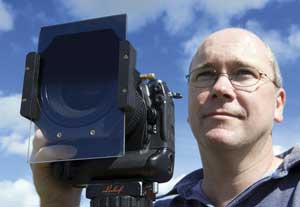Neutral Density Filters – Round v Square

I’m biased and I’ll admit it. I have been using a square system for years (Lee Filters) and it’s an incredibly versatile and flexible system, although in fact the Lee filters are rectangular. With the Lee holder, and with the cheaper Cokin system, you can use Grads very accurately by sliding them through the holder and placing them exactly where you need them – for example, on a horizon wherever that may be in the frame. At the same time you can use the square NDs or even the Big Stopper because the extra slots in the holder allow this flexibility.
Circular filters are fine if you are just using an ND filter, but as soon as you need a Grad then screw-in systems have a few drawbacks. Placing a Grad accurately on the horizon means moving the whole camera, not just the filter, which changes your composition. It means you have to position the horizon to suit the filter, rather than vice versa. If you are using a 10-stop screw-in circular filter (the filter being totally opaque), it becomes very difficult to use any other filters in front of it. With a square system such as Lee you can use Grads for exposure control, compose the image and then slide the opaque Big Stopper in without upsetting the composition.




